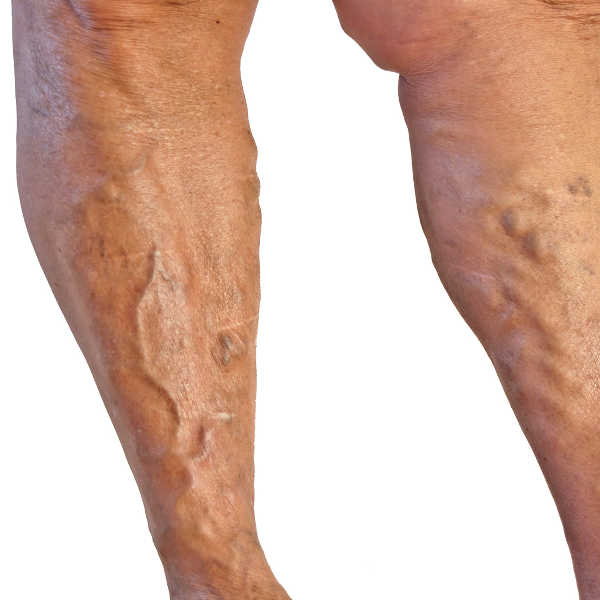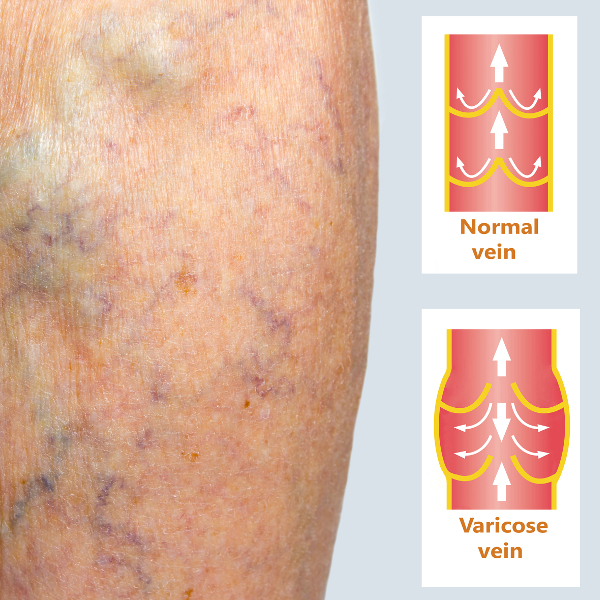Varicose Veins

What Are Varicose Veins?
Varicose veins are diseased veins that are enlarged or bulging; they are usually found in the legs, but they can also appear in the feet and other areas of the body. Often, varicose veins develop because of a breakdown of the Great Saphenous Vein, which is an internal vein running along the inside of the thigh. Varicose veins also are branches of superficial sets of veins, the long and short saphenous veins. Varicose veins are not essential, and since they are diseased they are harmful to your circulation and body. In fact, varicose veins can be an early sign of something more serious going on in the body.
When a vein becomes varicose, blood is leaking in the wrong direction; it begins to leak from the thigh into the calf and pools in the calves and feet. Because of this pooling, a lot of pressure is created, so the veins begin to stretch and bulge, which makes them varicose. Bad varicose veins can also lead to more bad veins.
At least 80 million Americans suffer from a venous disease, including varicose veins. A varicose vein is a malfunctioning vein and can be a sign of circulatory problems. If left untreated, varicose veins can lead to blood clots, ulcers, deep vein thrombosis (DVT), and pulmonary embolism (PE).
Fact One
More than 40 million Americans have and suffer from varicose veins.
Fact Two
If both of your parents have varicose veins, you have a 90% chance of developing the disease.
Fact Three
1 out of 2 women and 1 out of 3 men have venous insufficiency issues.
Factors That Contribute To Varicose Veins
There are several causes and factors of varicose veins. The number one cause of varicose veins is genetic; at least 50 percent of cases are hereditary. Age (50 or older) is a big factor to the development of varicose veins, because of all the wear and tear on the vein valves, although young adults and teenagers can develop these diseased veins, as well. People who do a lot of prolonged standing or sitting at their jobs can develop these veins. Women going through menopause, pregnancy, or are using birth control pills are at a higher risk of developing varicose veins. Also, obese individuals and people with a history of blood clots are at an increased risk.
Symptoms Of Varicose Veins
- Dark purple or blue veins
- Bulging or twisted veins that are like cords in their appearance
- Fatigue and restlessness
- A heavy, burning, throbbing or tingling feeling in the legs
- Pain in the legs
- Achiness or cramping in the legs
- Swelling in the legs or ankles
- Ulcers or darkening of the skin, especially around the ankle
Treatment Of Varicose Veins
People seek treatment for varicose veins for both cosmetic and medical concerns. Whether the veins are simply unsightly or are causing tremendous pain, people are looking to remove or reduce the appearance of these veins. Dr. Mikhail provides the following treatments for his patients suffering from varicose veins: compression therapy, endovenous ablation, microphlebectomy, and sclerotherapy.
























